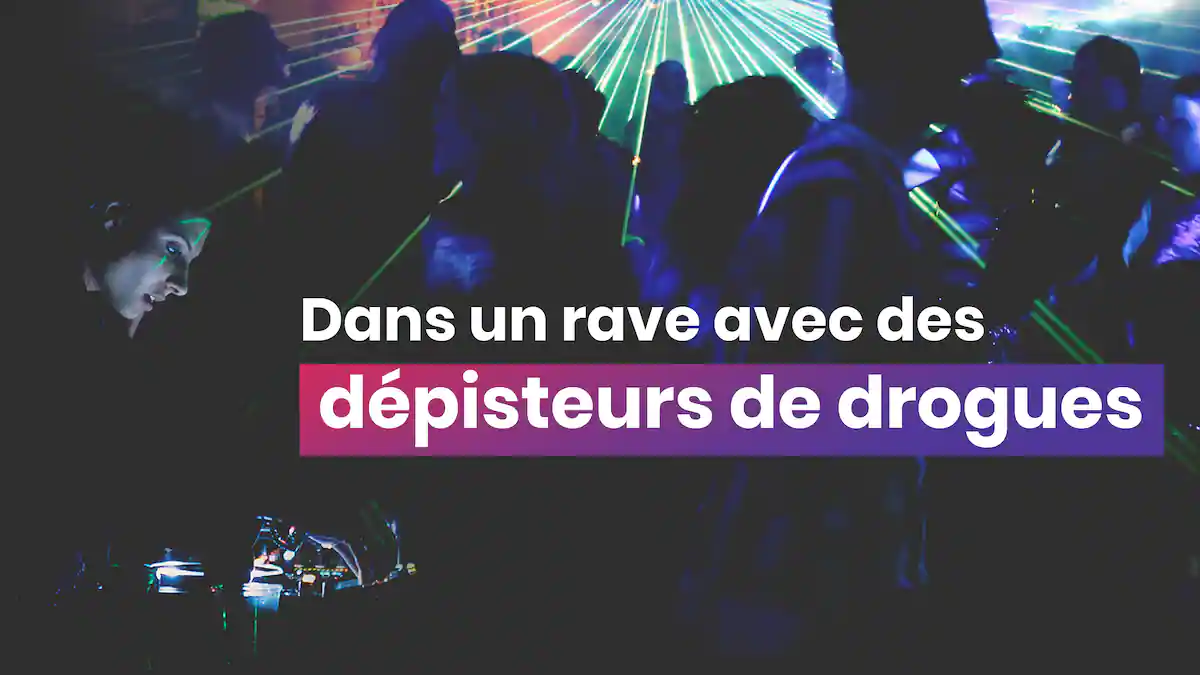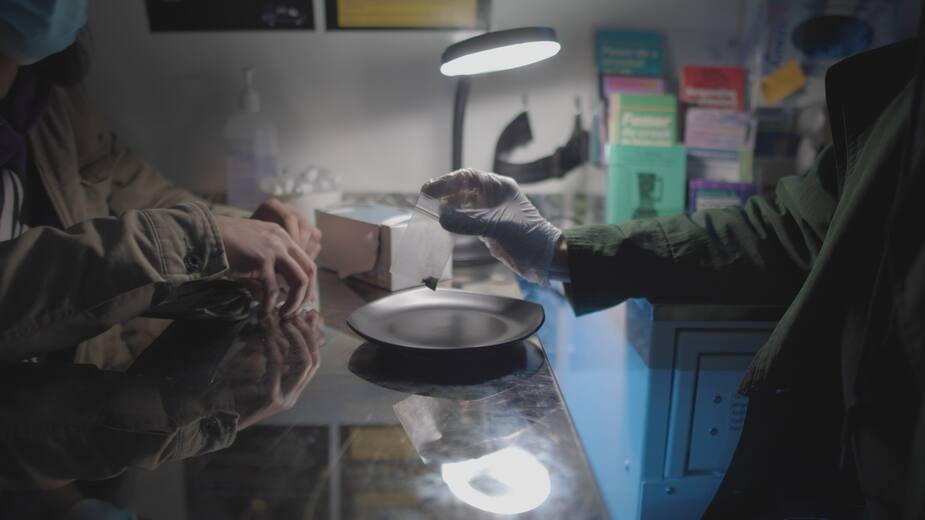Substance testing is increasingly being used in Canada to reduce the risks associated with drug use. The objective: that consumers know what the drug they are about to take contains. the 24 hours accompanied a Montreal organization that offers this service to a rave evening.
It is almost 11 p.m. when the van of the Psychosocial Research and Intervention Group (GRIP) parks in front of the Livart, rue Saint-Denis, in Le Plateau-Mont-Royal. On board, under the soft lighting of the strips of LED lights, we are preparing to receive partygoers who would like to know more about the substance contained in the plastic bag they are carrying in their pocket.
As is usually the case at electronic music raves, at this hour there are few people there. Around midnight, revelers begin to arrive, but it will take until 2 or 3 a.m., when most of the bars in the city are about to close, for the room to fill up.
Too early, therefore, to know if the services of GRIP will be required this evening.
While several revelers are likely to arrive in possession of one or more substances that will allow them to stay awake and dance until sunrise, not everyone is ready to get into a vehicle to check the drug quality.
GRIP is one of two organizations in Montreal that Health Canada allows to legally handle and test illegal products. And it hasn’t been very long: the exemption was granted to them last fall.
Moreover, passers-by wandering around rue Saint-Denis and people queuing to enter the Livart are at first surprised that a team offers them to analyze the drugs they have in their possession to find out if it contains fentanyl or if it is indeed coke or MDMA.
“There aren’t many places, in Montreal or in general, where people can talk openly about their use,” remarks Kathryn Balind, research and development officer for GRIP.
intervention
Once the surprise is over, Anthony* decides to make a detour by the van before entering Livart.
The rear doors of the vehicle are closed. A GRIP employee takes a very small portion of the whitish powder brought by Anthony, then gives it to Kathryn, who places it in the FTIR, an infrared spectrometer.
Quickly, a curve appears on the computer which is connected to the device. It is, in a way, the fingerprint of the substance. The computer compares this fingerprint to thousands of others stored in a database. In addition to drugs, everyday products such as sugar, coffee or baking soda are recorded in this same database.
• Read also: What you need to know about “bath salts”, this drug found in coke in Montreal
“In his MDMA, we actually found MDMA, confirms Kathryn after the operation. This is the only conclusion that can be drawn, because the machine has limits.
She then explains to us that a substance representing less than 5% of what is analyzed cannot be detected. “So you can’t say there’s nothing else.”
In this regard, Anthony is offered to use a fentanyl strip to see if his drug contains this powerful opioid associated with thousands of cases of accidental overdose in Canada for the past few years. The result is negative, but again, the test is not perfect.
“We only tested a small amount of his substance, so the result cannot be said to apply. [à tout le contenu de son sachet]“says Kathryn.
Although imperfect, these tests make it possible to see things a little more clearly, and Anthony seems to appreciate the experience. The GRIP employees even offered to take him home with fentanyl test strips and a kit of naloxone, the antidote to opioids, which stabilizes a person who overdoses long enough to bring him to the emergency room.
Before leaving, Anthony confides in his past. In France, he consumed a lot, so much so that the direction of his school had made him understand that he had to take himself in hand in order not to be expelled. “I stopped everything and had three weeks of cold sweats. I woke up in the morning, I felt like I was coming out of a swimming pool,” he recalls.
Some users are more talkative, others less so. “Sometimes a person really needs to talk about their experiences. We always want to welcome everyone and stay open,” says Kathryn.
• Read also: We spent a day in a drug addiction rehabilitation center for young people
Supporting consumers
GRIP has an approach to consumption based on harm reduction.
“It’s the idea that people are going to behave, no matter what you think about it. We therefore give them the tools to do it in a safe way and the information to make the decisions themselves in relation to that,” explains Roxanne Hallal, coordinator of the substance analysis service.
It’s a bit like the principle of promoting the use of condoms rather than sexual abstinence to minimize the risk of transmission of STIs, she adds.
• Read also: On the ground: 10 fatal drug overdoses every week in Quebec
The opioid crisis continues to rage. Across Quebec, 450 people died of an accidental overdose in 2021. Organizations, including GRIP, believe that harm reduction is one of the best ways to reverse this trend.
“In Quebec, there are other organizations that make requests [pour avoir l’exemption de Santé Canada] and other regions [que Montréal] will have access to services like that soon,” predicts Roxanne Hallal.
* We have changed this person’s name to protect their identity.
IF YOU NEED HELP
Drugs: help and referral – www.aidedrogue.ca – 1 800 265-2626




